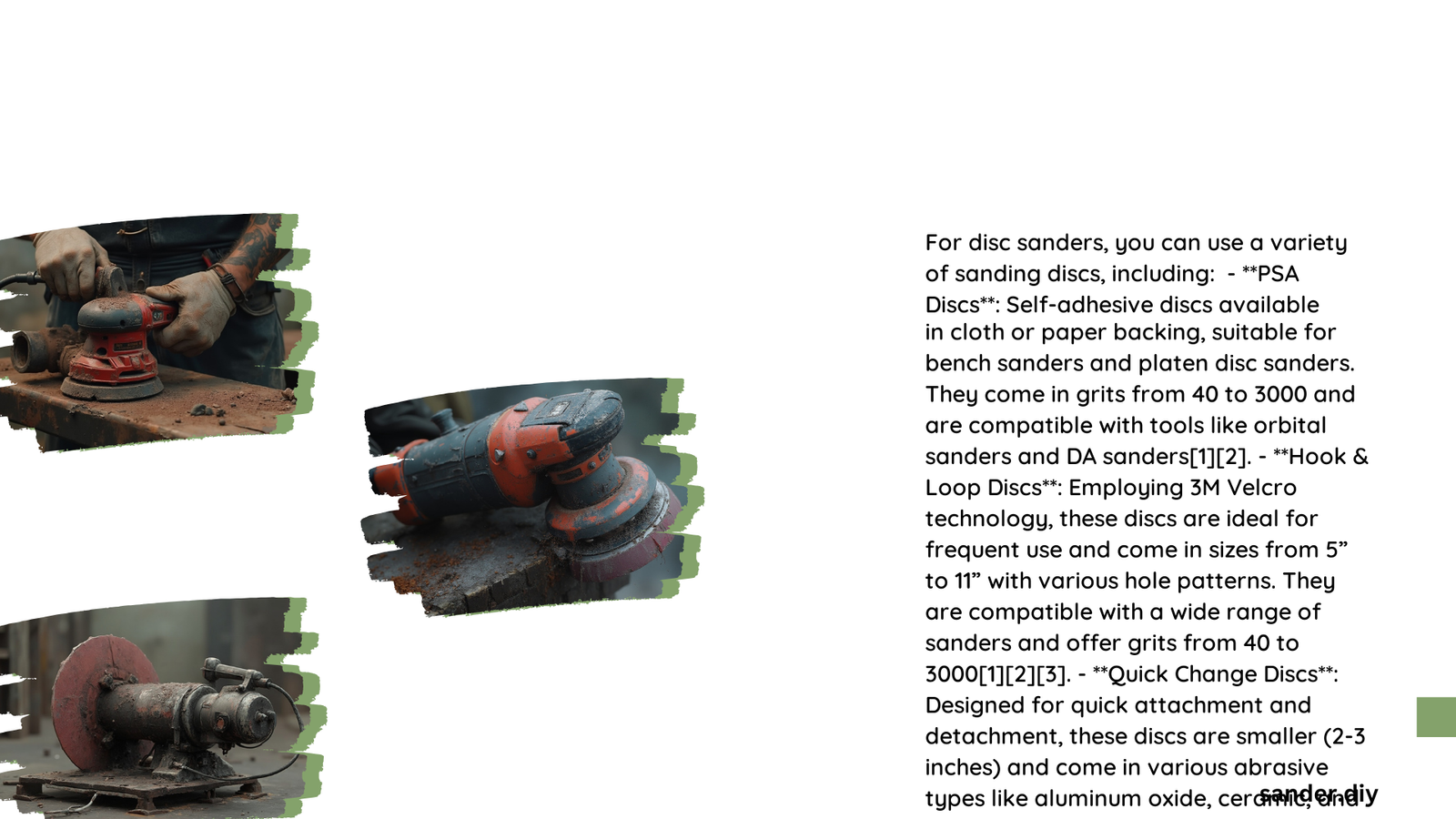Sanding discs for disc sanders are precision abrasive tools designed to transform rough wood surfaces into smooth, refined finishes. These circular abrasive attachments come in various grit sizes, materials, and configurations, enabling woodworkers to achieve professional-grade results across different stages of surface preparation and finishing. Understanding their nuanced characteristics is crucial for selecting the right disc to match specific woodworking requirements and achieve optimal performance.
What Are the Different Grit Ranges for Sanding Discs?
Sanding discs are categorized into distinct grit ranges, each serving a specific purpose in the wood surface preparation process:
Coarse Grit Ranges (24-80)
- Rapid material removal
- Ideal for:
- Rough-sawn surfaces
- Paint/finish elimination
- Initial surface leveling
Medium Grit Ranges (80-150)
- Surface smoothing and preparation
- Effective for:
- Removing mill marks
- Intermediate surface refinement
- Preparing surfaces for finishing
Fine Grit Ranges (220-400)
- Achieving smooth surfaces
- Recommended for:
- Final surface preparation
- Sanding between finish coats
- Pre-finishing smoothing
Polishing Grit Ranges (600+)
- High-shine surface finishing
- Used for:
- Final polishing
- Achieving ultra-smooth surfaces
- Professional-grade finishing
How Do Material Types Impact Sanding Disc Performance?

| Material Type | Characteristics | Best Applications |
|---|---|---|
| Aluminum Oxide | Durable, cost-effective | General wood sanding |
| Silicon Carbide | Aggressive, hard | Metal and glass surfaces |
| Alumina-Zirconia | Highly durable | Heavy-duty wood sanding |
| Ceramic | Extremely aggressive | Hardwood and dense materials |
What Factors Determine Disc Sander Compatibility?
Selecting compatible sanding discs requires careful consideration of multiple factors:
Size Compatibility
- Standard disc sizes: 5-6 inches
- Match disc diameter precisely with sander specifications
Backing Type Considerations
- Hook-and-loop (Velcro) backing
- Pressure-sensitive adhesive (PSA) options
- Verify attachment mechanism compatibility
Performance Optimization Tips
- Check manufacturer recommendations
- Use appropriate adapters if necessary
- Inspect disc condition before each use
How to Choose the Right Sanding Disc?
Selecting the optimal sanding disc involves evaluating:
– Project requirements
– Wood material type
– Desired surface finish
– Sander specifications
Practical Selection Strategies
- Start with coarser grits for initial material removal
- Progress through increasingly finer grits
- Match disc material to specific woodworking task
- Consider long-term cost-effectiveness of bulk purchases
What Maintenance Practices Extend Sanding Disc Lifespan?
- Store in cool, dry environment
- Avoid moisture exposure
- Clean after each use
- Rotate discs to ensure even wear
- Replace when significant wear is observed
Expert Recommendations
Professional woodworkers suggest:
– Invest in high-quality discs
– Maintain consistent sanding pressure
– Use appropriate safety equipment
– Regularly inspect disc condition
Reference:
– Family Handyman – Sandpaper Guide
– Woodworking Network – Abrasive Selection
– Popular Woodworking – Sanding Techniques
